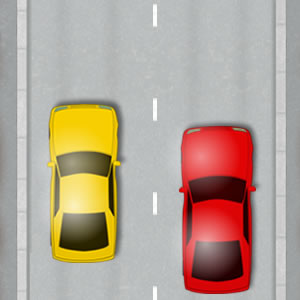At it's simplest, in British English the distinction is drawn by the number of lanes and if the directions of traffic are separated. If it has two lanes, one in each direction (or even a single lane, in the country) then it's a road - Or a street if it's in an urban area, which shares a common origin with "straße" in the Latin "strata" - The Romans built the first real roads in England, Germany and pretty much everywhere else in Europe. If it has four lanes, two in each direction but there's no barrier, it's still a road. If it has two lanes in each direction but they're divided by a central reservation that can't be crossed because there's a barrier or a strip of grass to stop people, it's a dual carriageway. If it has three or more lanes in each direction (in which case traffic will definitely be separated) it's a motorway.
Typical speed limits would be 30 in urban areas, 55 on the dual carriageway (and roads outside of town - though they can also be 40 or 50) and 70 on the motorway.
Miles per hour that is, the UK still uses miles like the Americans. But we're particularly awkward and confusing (as usual) since everything else officially went metric decades ago
except road signs and speed limits. We like to be different.
Like I mentioned above, while "highway" is in fact a very old term that was once used in British English (think "
highwayman") it isn't used in the UK to refer to modern roads, at least not in everyday speech. It probably hasn't been used since there were actual highwaymen. Which is around the same time the Americans got that whole "independence" idea into their heads, so that's probably why it diverged.




